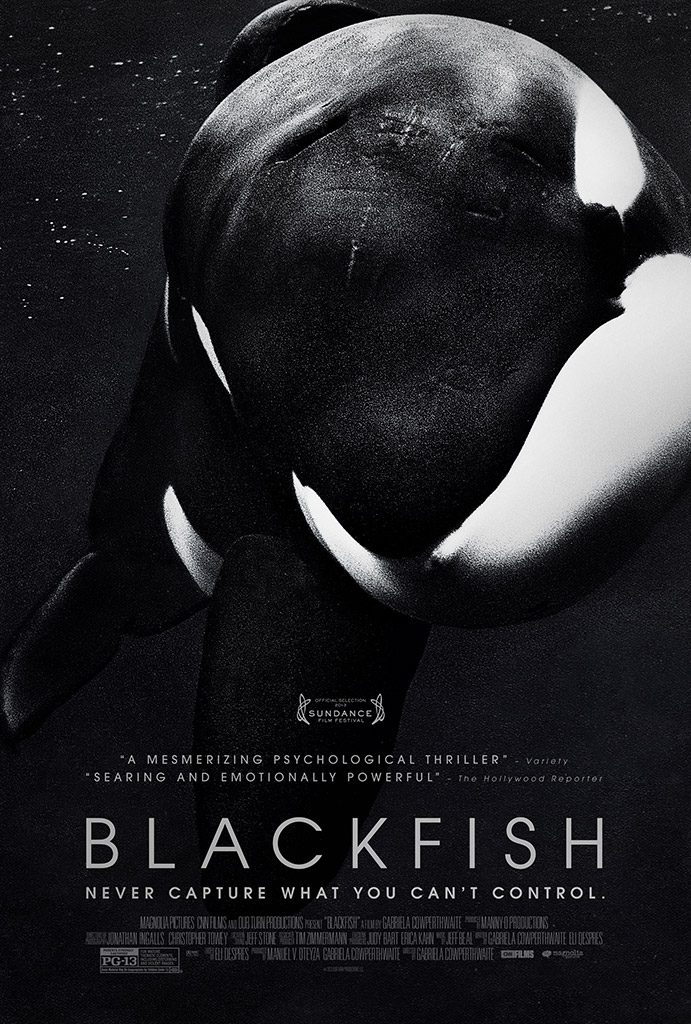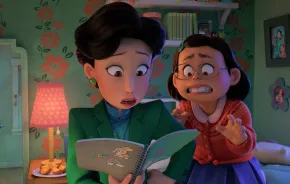 Just recently Bindi Irwin (daughter of the late Crocodile Hunter Steve Irwin) was appointed as a spokesperson for SeaWorld. This prompted me to watch the documentary Blackfish and reflect upon my experiences with orca whales.
Just recently Bindi Irwin (daughter of the late Crocodile Hunter Steve Irwin) was appointed as a spokesperson for SeaWorld. This prompted me to watch the documentary Blackfish and reflect upon my experiences with orca whales.
When I was 13, my dad took my brother and me to SeaWorld in San Diego, and I loved every minute of it. Having only ever seen whales and dolphins on TV, nothing compared to Shamu leaping in the air and splashing us with water. The trainers even strutted around like they were in complete control. After the show in the gift shop, I spotted a small blue and white pin with gold letters that said "Shamu Trainer" and used my allowance money to buy one. I kept it for years, imagining that if I worked hard enough I could one day train killer whales at SeaWorld, too. While I didn’t actually end up doing that, I have continued to have a deep affinity for these magnificent creatures.
Not long after I graduated from college in 2000, I discovered that there was an orca whale at the Vancouver Aquarium just 3 hours north of Seattle. There weren't trainers in the water like at SeaWorld, but the whale did show off some high-flying moves. With my adult perspective though, I couldn't ignore how the pool seemed too small for such a large animal. And instead of breathless excitement to see a live orca whale, a new feeling — one of concern for the whale’s welfare — dominated my thoughts.
In 2002, I traveled to San Juan Island with some family and friends. While dropping crab pots out in the Sound, our boat drifted near a pod of orcas. Their majesty and power were on full display as we watched five or six animals swim by our boat. Seeing this put in perspective the gimmicky truth of captive habitats: the artificial environment of pools and pens in no way reflected the natural one, and thus the whales in captivity in no way reflected real whale behavior either. But when I watched Blackfish, the foreshadowing of a tragedy unfolded, 40 years in the making. The film, for those who are unfamiliar, is an explosive exposé about SeaWorld and how park operators seemingly misled the public about the death-by-whale of senior trainer Dawn Brancheau. The picture the film paints is one of corporate greed and apathy for animal (and human) welfare.
I found Blackfish heartbreaking. As a mom, I felt a real heartache when the men rounded up the whales and took the calves from their mothers. Normally, these animals stay in groups (pods) with their families for life and live similar lifespans to humans, in the range of 70-80 years. And I felt betrayed on behalf of the young me who bought into the SeaWorld spectacle — a spectacle that sadly condemned these animals to a life of servitude and separation from their natural way.
It’s easy to feel misled, just like the (once) young, bright-eyed former trainers who were interviewed in the movie. They described their connection to the orcas and their naive beliefs that they were doing something noble in the name of conservation and education. But the documentary revealed that SeaWorld wasn’t giving its trainers accurate information about whale life and what these animals were like in the wild. They were taught that traits observed in captive whales were natural, and to sell that message to the audience. The trainers weren't even told that some of these whales had killed or injured previous trainers.
 Blackfish garnered significant attention and critical acclaim as it rounded the film festival circuit in 2013 and then was broadcast on CNN later in the year. Since then, constant protests, celebrity appearance pull-outs and bad public relations have plagued SeaWorld. Just last month, proposed legislation was put forth in California to ban orcas in captivity altogether.
Blackfish garnered significant attention and critical acclaim as it rounded the film festival circuit in 2013 and then was broadcast on CNN later in the year. Since then, constant protests, celebrity appearance pull-outs and bad public relations have plagued SeaWorld. Just last month, proposed legislation was put forth in California to ban orcas in captivity altogether.
For parents, a film like Blackfish and the buzz it creates puts a focus on a question many of us struggle with: What to do when you have children who are eager to learn about and see wild animals, and often the only or most likely opportunity for that is viewing them in captivity?
In an effort to understand how much effect Blackfish had on people’s current opinions of aquariums and keeping animals in captivity, I ran an anonymous poll. Of the 113 respondents, 97 percent had kids under 18 years of age. When asked, “What are the most justifiable reasons for keeping large animals like orcas in captivity?” the top three answers were: conservation of species (28 percent); rehabilitation of sick or injured animals (28 percent); and education of the public (19 percent). Just 7 percent responded that there was no good reason to keep them in captivity at all. But no one choose "entertainment" or "a profit-making enterprise," which are basically SeaWorld’s purpose. However, it appears Blackfish is having an effect on awareness and perception. In the poll, 24 percent of respondents felt critical media attention had now made them less likely to visit an aquarium.
For an expert opinion, I consulted Dr. Naomi Rose, marine mammal scientist with the Animal Welfare Institute, who said unequivocally that there is no good reason to keep orcas in captivity. "They reproduce perfectly well in the wild. Their main threat is habitat degradation — something SeaWorld and places like it have not done much to address. The exhibits are not even valuable for education or raising awareness, [because] much of the information available in the park is misleading or false. Also, very little conservation-related research has been produced by captive orca facilities or researchers working with captive orcas," she told me.
Rose said she spoke at length with Blackfish director during the film's creation and that the film was "carefully researched and vetted by attorneys." In response to the film, SeaWorld published a lengthy webpage and embarked on an aggressive PR campaign. "SeaWorld is defending itself as best it can," Rose said, “but generally the counter-claims are coming from the company [SeaWorld], which has a conflict of interest. They should be using outside researchers and analysts to say similar things, but they cannot find any outsiders who will, because they are mostly not true."
Like a splash of cold water during a Shamu show, this film has jolted me awake. Perhaps some people can still go to SeaWorld (and places like it), unaware or unconcerned that they are supporting an unnatural and sub-optimal life for these animals. But I’ll never be able to go back, and I won't take my children.
What about whale watching in the wild?
For people in some parts of the country, whale-watching is a viable option. Make sure to choose a reputable operator who minimizes their impact on the whales. According to Dr. Naomi Rose, marine mammal scientist with the Animal Welfare Institute, negative interactions may cause animals to change their behavior, vocalize differently, or even stop foraging or resting. All of these things place stress on the animals.
Here are general rules for having a safe, positive whale encounter*:
- Keep a boat engine in idle mode (don’t turn off the engine, which makes the vessel "invisible" to the whales)
- Keep a good buffer between you and the whales (ideally 100 yards)
- Never separate a group of animals by putting a boat in the middle of their group
- Don’t block the whales' forward progress (parallel the animals' progress, slightly to the front and to the side, so they can 'see' you)
- Don’t change speed suddenly
- Never speed toward or away from a group of animals
- Encounters should be kept to under a half hour
*Source: Dr. Naomi Rose, marine mammal scientist with the Animal Welfare Institute.
Recommended orca whale resources
Museums:
The Whale Museum in Friday Harbor, Wash.
The Sant Ocean Hall at the National Museum of Natural History in Washington, D.C.
Book:
Whales and Dolphins of the World by Mark Simmonds
Documentary suitable for kids:
The Whale by Suzanne Chisholm and Mike Parfitt
Websites:
Planet Whale (whale watching operator recommendations)











